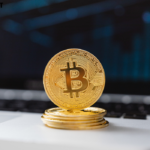Automated market makers (AMMs) have emerged as a popular approach to liquidity provision in the decentralized finance (DeFi) space. Unlike traditional order book-based exchanges, AMMs use mathematical algorithms to determine the price of assets and provide liquidity for trades. In this article, we’ll explore the basics of AMMs, their benefits, and their challenges. What are Automated Market Makers (AMMs)? Automated market makers are decentralized protocols that use mathematical algorithms to determine the price of assets and provide liquidity for trades. They are designed to automate the process of market making, which involves providing liquidity for trades and ensuring that there is always a buyer or seller for any given asset. AMMs use a pool of funds to provide liquidity for trades. Users can trade assets with the AMM by depositing them into the liquidity pool and receiving pool tokens in return. The AMM algorithm then uses the ratio of assets in the pool to determine the price of assets and execute trades. How do Automated Market Makers (AMMs) work? AMMs use mathematical algorithms to determine the price of assets and provide liquidity for trades. They do this by creating a pool of funds for each asset pair, such as ETH/USDT. Users can deposit assets into the pool and receive pool tokens in return, which represent their share of the pool. The price of assets in the pool is determined by a mathematical algorithm that uses the ratio of assets in the pool. As the demand for one asset increases relative to the other, the algorithm adjusts the price of the assets in the pool to maintain balance. When a user wants to trade assets with the AMM, they simply deposit their assets into the pool and receive pool tokens in return. The AMM algorithm then executes the trade, exchanging the user’s assets for assets in the pool at the current price. Benefits of Automated Market Makers (AMMs) Automated market makers offer several benefits for DeFi users and the broader blockchain ecosystem. Liquidity They provide liquidity for assets that may not be listed on traditional exchanges, allowing for greater market access and efficiency. Resilient to market manipulation AMMs can be more resilient to market manipulation than traditional order book-based exchanges. Since the price of assets is determined by a mathematical algorithm, AMMs are less susceptible to price manipulation by large traders. Cost-effective AMMs can be more cost-effective for smaller trades, as they do not require complex order matching algorithms and can provide liquidity for trades of any size. Challenges of Automated Market Makers (AMMs) While automated market makers offer several benefits, they also face several challenges. One of the main challenges is the issue of impermanent loss, which occurs when the price of assets in the liquidity pool diverges from the price of assets on other exchanges. This can lead to losses for liquidity providers, as they may be forced to sell assets at a lower price than they initially deposited. Another challenge facing AMMs is the issue of slippage, which occurs when the price of an asset changes during the execution of a trade. This can result in trades being executed at a different price than expected, leading to losses for traders. Finally, AMMs can also face technical challenges in ensuring that the price of assets in the pool accurately reflects the market price. This can require sophisticated mathematical algorithms and frequent updates to ensure that the price of assets is always accurate. How Automated Market Makers (AMMs) Are Used in DeFi AMMs are used in a variety of DeFi applications, including decentralized exchanges (DEXs), lending protocols, and prediction markets. In DEXs, AMMs provide liquidity for asset trades, allowing users to swap one asset for another without relying on a centralized exchange. In lending protocols, AMMs provide liquidity for borrowers and lenders, allowing borrowers to borrow assets and lenders to earn interest on their deposits. In prediction markets, AMMs provide liquidity for users to bet on the outcome of events, such as election results or sporting events. AMMs are also used in yield farming, which involves depositing assets into liquidity pools and earning rewards in the form of native tokens or transaction fees. Yield farming has become a popular way for DeFi users to earn passive income on their assets. Limitations of Automated Market Makers (AMMs) While AMMs offer several benefits, they also have limitations that must be considered. One limitation is the issue of price discovery, which can be more challenging in AMMs than in traditional order book-based exchanges. Since the price of assets is determined by a mathematical algorithm, the price may not always reflect the true market price, particularly for illiquid assets. Another limitation is the issue of scalability, as AMMs can be more computationally intensive than traditional exchanges. This can lead to higher gas fees and slower transaction speeds, particularly during periods of high network congestion. Finally, AMMs can also be more complex to use than traditional exchanges, particularly for novice users. The use of pool tokens and mathematical algorithms can be confusing for some users, leading to errors and losses. Future of Automated Market Makers (AMMs) The future of AMMs looks promising, as they are becoming increasingly important in the DeFi space. As the DeFi ecosystem continues to grow and evolve, AMMs are likely to play an increasingly important role in providing liquidity for a wide range of assets and asset pairs. Moreover, as new DeFi applications emerge and gain popularity, AMMs are likely to be used in increasingly innovative ways. For example, AMMs could be used to provide liquidity for decentralized insurance protocols or decentralized identity solutions. However, there are also challenges that need to be addressed for AMMs to reach their full potential. These challenges include addressing the issue of impermanent loss, improving price discovery mechanisms, and addressing scalability and usability issues. Conclusion In conclusion, automated market makers have emerged as a powerful new approach to liquidity provision in the decentralized finance space. While they have limitations and challenges, they offer several…
















